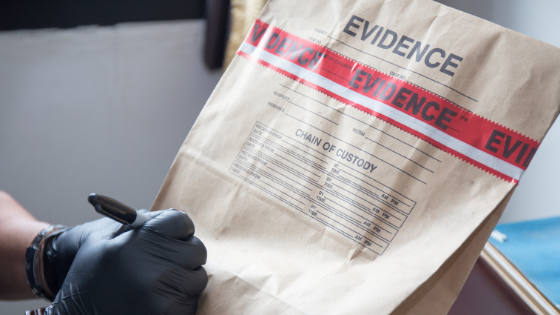It is critical to transport individuals who are in custody into or out of a police station in a manner that is safe and secure for all parties. Achieving this requires a proper enclosed space, or police station sally port, in which the prisoner or detainee can be transferred to and from a police vehicle. A police sally port is defined as a secure entryway into the police station through which access is controlled by a series of doors. This access control helps ensure that there are layers of protection during prisoner transfer. This article explores design features of the police station sallyport that optimize functionality and help ensure the safety and security of all users.
Size and Layout
The sally port should be configured with a separate vehicular entrance and exit, commonly known as a “pull through” style. If the sally port is meant to accommodate one vehicle, it should be at least 800 square feet with approximate proportions of 40’ long by 20’ wide. This will accommodate a police cruiser, SUV, and even a prisoner transport van. To accommodate a second vehicle, the sally port should be roughly twice as large.
Walls, Ceiling, and Floor
The walls of the sally port need to provide a high degree of durability to protect against impact resistance and should be easily washable. Concrete blocks coated with an epoxy paint are a good choice. The epoxy paint will resist the soot and grime associated with a garage and can be easily wiped or hosed down. A recessed, covered water hose connection should also be included in the sally port. The walls should run from slab to the underside of the floor or roof deck above to prevent someone from escaping through a void between the top of a low wall and the underside of a deck.
If there is a ceiling, it should be solid gypsum wall board. Adding acoustical tiles adhered directly to the gypsum board can help with sound deadening. A suspended ceiling should not be used as the space above the ceiling could provide a hiding spot for an escaped detainee. Alternately, there could be no ceiling and the joists and deck could be left exposed. If the ceiling is left exposed, it should be painted white to help reflect light and to keep the space bright. The clear height should be 14’-0” to the ceiling, exposed structure, or any other ceiling features.
Similar to the walls, the floor of the sally port should also be washable. The police vehicle tracks in mud, dirt, road dust, and – depending on your area’s climate – possibly snow, ice, slush, and road salt. All of that will end up on the sally port floor. A best practice for designing a floor appropriate for a vehicle sally port is to use sealed concrete with at least one floor drain. The drain will funnel away the water being used to wash the floor and walls and will carry away rain and snow brought in with the vehicles. Consider using a trench drain, also called a channel drain, which is a long drain that can run along the center of the sally port floor or along the inside of the overhead doors. If a trench drain is chosen, make sure it is the drive-over variety.
CCTV and Electronic Security
There should be complete CCTV camera coverage of the sally port, and the coverage should be viewable from the security monitors in the central control post. A best practice is to have cameras in the corners of the sally port - one aimed at the front of the vehicle and providing views of the driver’s side, and another aimed toward the rear of the vehicle and the passenger side. This second camera should provide views of a detainee being taken out of the vehicle without the vehicle’s open door obstructing the view.
Duress alarms should be provided in the sally port. Activated duress alarms should be heard within the police station and should be integrated with the security console in the central control post. The number and location will depend on the specific layout of the space, but I recommend having one on the wall near the driver’s door of the police vehicle. A good location for a second duress alarm is near the rear passenger side since emergency situations may occur when loading or unloading detainees. The duress alarms should have a lift-up cover to prevent accidental activation.
.png?width=529&name=Police%20Sally%20Port%20Schematic%20Floor%20Plan%20(1).png) Schematic Sally Port Plan (Not to Scale)
Schematic Sally Port Plan (Not to Scale)
Doors
Two overhead roll-up doors vehicular doors should be provided at opposite ends of the sally port - one entrance and one exit. Another option is the use of a bifold-acting door. The doors should be sized to accommodate a prisoner transport van. The doors should be automatic and fast acting, opening or closing in three seconds or less. The shorter the amount of time the sally port door is open, the lower the chance of a security issue occurring. The vehicular doors should have a “time-out” feature so that they automatically close after a given amount of time. This will prevent the doors from being unintentionally left open, creating a security issue. There may be occasions when police personnel may want to keep the vehicular door open, so it’s a good idea to have the capability to override the time-out feature.
The vehicular entrance doors should be operable three ways: from a proximity card reader on a drive-up pedestal/stanchion outside the entrance door, from a proximity card reader inside the sally port, and from the police station’s central control post. The exit door should be operable from a card reader inside the sally port and from the central control post.
An audio-video intercom should be provided on the drive-up pedestal outside the sally port, with a connection to the central control post. This allows personnel in the control post to speak to and see authorized individuals prior to opening the door for them.
If there are pedestrian doors leading to the exterior, they also need to be secured by proximity card readers on both sides to prevent detainees from escaping to the outside. A peephole should be provided from the inside, or better yet, a wide-angle door viewer should be provided so police personnel can ensure that the area outside the door is clear of unauthorized individuals before opening.
The door from the sally port into the police station should be controlled by proximity cards on both sides to prevent the detainee from gaining unauthorized use of the door. A peephole or wide-angle door viewer should be included to provide views into the facility from the sally port. A best practice is to place a TV monitor above or beside the door inside the station hooked up to a camera with views inside the sally port. This allows personnel inside the station to know if the sally port is occupied or if an officer is bringing in a detainee.
Pedestrian doors should have automatic closers to ensure they close and latch. Doors should also have electronic position indicators to alert the central control post if a door is left open or does not latch properly. Overhead doors also require position indicators integrated with the central control post.
Location and Adjacencies
The door from the sally port leading to the police station should open into secure circulation - separate from the rest of the restricted parts of the police station, and part of the secure prisoner processing area, cellblock (if present), and interrogation rooms. It would be a security and safety hazard to bring a detainee from the sally port into the regular operational or administrative areas of the facility. In many cases, station policy is that officers cannot bring weapons into the secure prisoner processing area or cellblock. Therefore, gun lockers should be provided inside the sally port for officers to store weapons prior to entering the secure prisoner areas.
The exterior of the sally port should be within the police station’s secure area of the site, which should be protected by a fence and gates. The sally port should be located so there are no clear views of it from public roadways or public parking areas. In addition, there should not be any views from the entrance to the sally port to the secure parking for police personnel, the police personnel entrance, or the fueling depot, if one is present. The areas immediately outside the sally port entrance and exit should be well-lighted (at least 2 footcandles).
.png?width=2483&name=Police%20Sally%20Port%20Site%20Plan%20(1).png) Sally Port Location on Site Plan
Sally Port Location on Site Plan
Heating and Ventilation
At a minimum, the sally port requires heating and mechanical ventilation. Air conditioning is an option to consider, especially in hotter climates, but is not a necessity. Heating could be supplied by the building’s heating system, separate unit heaters, or by radiant heaters installed near the ceiling, like those used at a loading dock.
Proper ventilation to remove the vehicle exhaust fumes is a must and should be done through mechanical means such as fans and ducts. The amount of ventilation needs to be in accordance with local building codes. In addition, a carbon dioxide sensor should be provided with alarms that sound within the sally port and at the central control post.
Built for Security and Safety
A police station sally port is designed not just for functionality, but with the safety and security of all users in mind. But the best physical designs also require strict adherence to established polices and protocols to achieve optimal security. No matter how well the space is designed, policies such as verifying the proper closing of all doors, cleaning road grime from the floor, clearing the sally port of all clutter, or not leaving vehicles running for unnecessarily long times need to be enforced. Strategic design and well-thought-out policies together can result in the safe and functional operation of the sally port.




.jpg)




.jpg)
.jpg)
-1.jpg)
.jpg)
.jpg)
.jpg)
.jpg)
.jpg)

